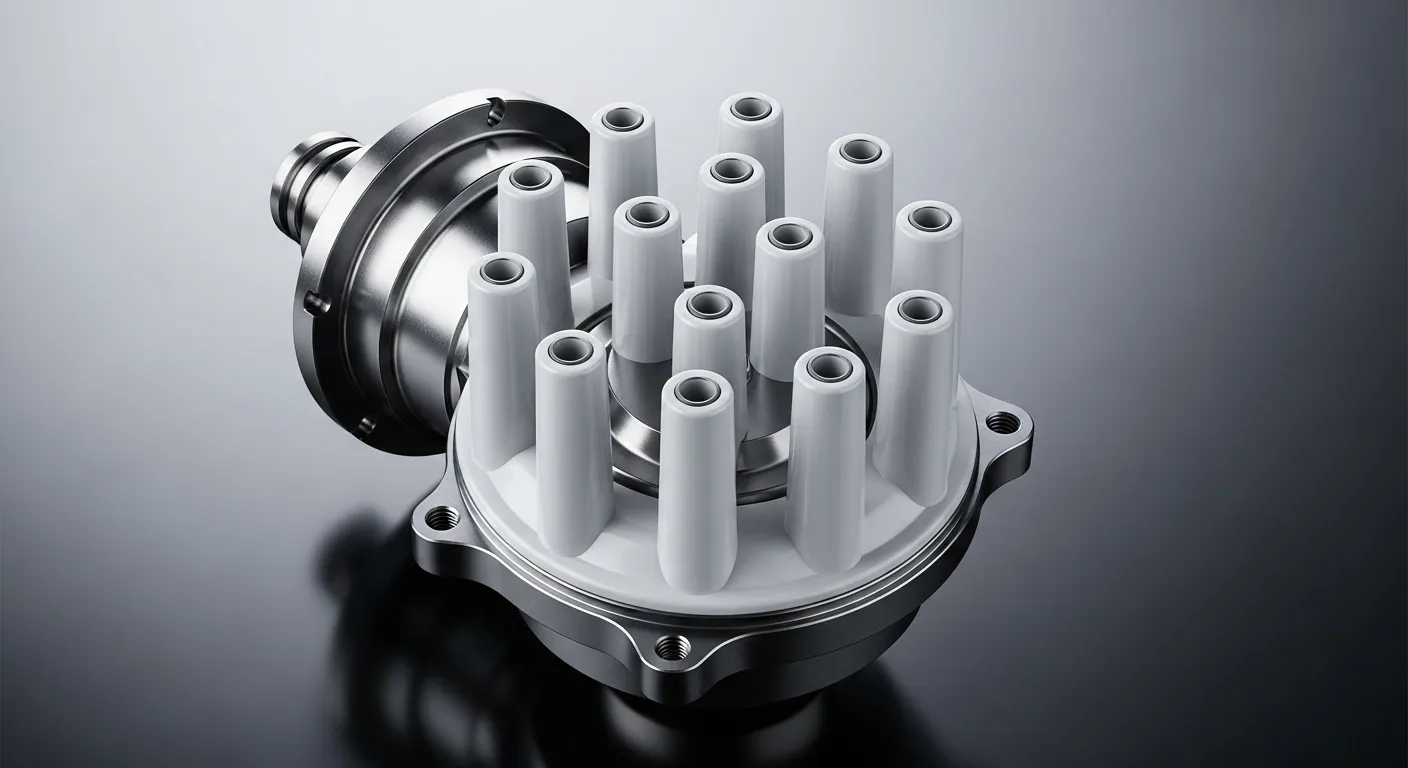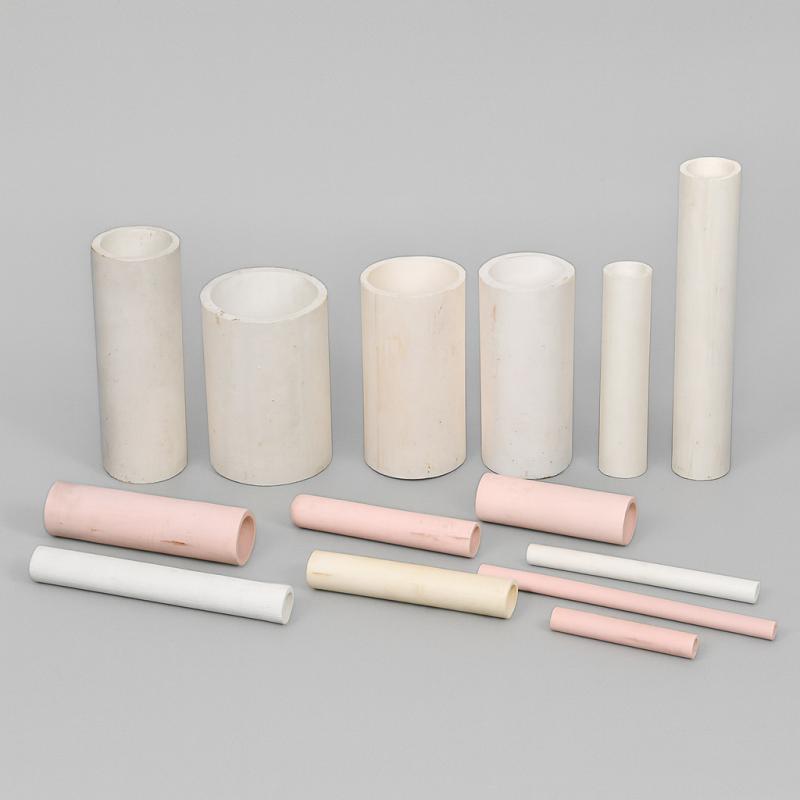Custom Ceramic Ferrule Manufacturer China
A premier Custom Ceramic Ferrule Manufacturer China is a vital partner for innovation. These specialized companies produce non-standard, high-precision ceramic components. Standard ferrules meet the needs of common connectors. Custom ferrules are required for new, advanced technologies. These components are essential for medical devices, optical sensing, and research.

Manufacturers in this region have scaled their production. They have mastered the complex processes of ceramic engineering. This allows them to offer advanced custom capabilities. They combine high-volume expertise with the flexibility for custom orders. This article explores the world of custom ceramic ferrules. It covers the designs, the manufacturing process, and the quality assurance systems.
What Defines a "Custom" Ceramic Ferrule?
A standard ceramic ferrule has a defined size. A custom ferrule is any design that deviates from these standards. A general ceramic ferrules guide explains the common types.
The Standard Ferrule Specifications
The global industry uses two standard ferrule sizes.
- 2.5 mm Outer Diameter (OD): This size is used for SC, ST, and FC connectors.
- 1.25 mm Outer Diameter (OD): This size is used for LC and MU connectors.
These parts are mass-produced in the billions. They are the foundation for most data networks.
The Need for Custom Designs
A custom ceramic ferrule is made for a specific application. It does not fit a standard connector. Engineers design custom ferrules when they need:
- A different number of fibers.
- A different fiber type or size.
- A unique connector housing.
- A specific mechanical function.
These custom parts drive innovation. They allow engineers to create new types of optical devices.
Material of Choice: Zirconia
Even for custom parts, zirconia is the standard material. A zirconia ceramic ferrule is the only choice for high-performance applications. The reasons are clear.
- Hardness: Zirconia resists scratches and wear.
- Toughness: It is not brittle and resists cracking.
- Thermal Stability: It expands and contracts at a rate similar to glass fiber.
This material stability is essential. It ensures the custom part will perform reliably.
Types of Custom Ceramic Ferrule Designs
A Custom Ceramic Ferrule Manufacturer China can produce a wide array of designs. These designs are limited only by the customer's imagination and the physics of the material.
Multi-Bore Ceramic Ferrules
This is the most common custom request. A standard ferrule has one central bore. A multi-bore ferrule has two, four, eight, or more precision holes.
- Function: These ferrules hold multiple fibers in a precise, parallel array.
- Applications: They are used in parallel optics. They are also used in medical imaging probes. Fiber arrays for sensing also use multi-bore ferrules.
Non-Standard Outer Diameters (OD)
Engineers may design a new connector. This housing may require a non-standard ferrule OD. A manufacturer must create new tooling to produce these parts. This could be 1.0 mm, 3.0 mm, or any other specified size.
Non-Standard Inner Diameters (ID)
The standard 126 µm bore is for 125 µm fiber. Some applications use different fibers.
- Large Core Fibers: Medical lasers or sensors may use fibers with a 200 µm or 400 µm core.
- Fiber Bundles: An application may need to hold a small bundle of fibers.
A custom ferrule can be made with a larger, precision-lapped bore.
Ferrules with Mechanical Features
This is a large category of customization. These features are for mechanical alignment or retention.
- Grooves: A "U" or "V" groove can be cut into the ferrule body. This helps align the ferrule within a housing.
- Steps: The ferrule OD can be stepped. It may have a 1.25 mm tip and a 2.0 mm base. This helps lock it into place.
- Flats: A flat side can be ground onto the ferrule. This acts as a "key." It ensures the ferrule is inserted in the correct orientation. This is vital for APC ferrules.
- Custom Chamfers: The lead-in edge of the ferrule can be angled. This helps with insertion.
Custom End-Face Geometries
Standard ferrules are polished to a PC (domed) or APC (angled) shape. Custom applications may require unique end-faces.
- Flat Polishes: Some sensing applications require a perfectly flat, non-contact polish.
- Spherical Polishes: A custom radius of curvature may be needed.
- Angled (Non-8-Degree): An engineer may specify a 4-degree or 10-degree angle.
The Custom Manufacturing Process: A Partnership
Creating a custom ferrule is a partnership. It is a co-engineering process between the customer and the manufacturer.
Phase 1: The Technical Drawing
The customer must provide a detailed technical drawing. This is the most important document. It must specify:
- All dimensions (length, OD, ID).
- All tolerances for these dimensions.
- All mechanical features (grooves, steps).
- The material (Y-TZP Zirconia).
- The end-face geometry.
Phase 2: Design for Manufacturability (DFM)
A premier Custom Ceramic Ferrule Manufacturer China will not just give a price. They will perform a DFM review. Their engineers will study the drawing.
- They check if the design is possible to mold.
- They check if the tolerances are realistic.
- They may suggest small changes. These changes can reduce cost or improve the part.
This DFM review is a sign of an expert manufacturer.
Phase 3: Custom Tooling and Mold Creation
This is the largest initial cost. A standard ferrule uses a mold that makes millions of parts. A custom ferrule needs a new, custom mold. This mold is cut from high-strength steel. It must be a perfect negative of the final part. It must also account for the exact 20-25% shrinkage during sintering.
Phase 4: Ceramic Injection Molding (CIM)
The manufacturer mixes the Y-TZP powder and binder. This feedstock is injected into the new custom mold. This creates the "green parts."
Phase 5: Debinding and Sintering
The custom green parts are carefully processed. They are heated slowly to remove the binder. They are then sintered at high heat. The parts shrink and become hard. This stage is complex. A custom shape with thick and thin sections requires careful control.
Phase 6: Secondary Machining
Some custom features cannot be molded. They must be added after sintering. This is done with diamond-coated tools.
- Diamond Grinding: This is used to create grooves, steps, and flats.
- Laser Machining: Lasers can be used to drill very fine holes.
- Precision Lapping: This is used to finish the custom ID.
Phase 7: Prototyping and First-Article Inspection
The manufacturer will first produce a small "prototype" batch. These parts are then measured. This is called a First-Article Inspection (FAI). The FAI report compares the part's actual dimensions to the customer's drawing. This report is sent to the customer for approval.
Phase 8: Full-Scale Production
Once the customer approves the FAI report, full-scale production begins. The manufacturer uses the custom mold to produce the final quantity of parts.
Why Source Custom Ferrules from This Region?
Sourcing a custom ceramic ferrule China offers significant advantages. This is due to the region's unique manufacturing ecosystem.
Unmatched Manufacturing Expertise
This region is the world's largest producer of standard ceramic ferrules China. Manufacturers here have spent decades perfecting the CIM process. They have overcome the challenges of high-volume, sub-micron precision. This expertise is directly transferable to custom projects.
Vertically Integrated Supply Chain
The entire supply chain is mature. This includes:
- Raw Zirconia powder producers.
- High-precision mold and tooling shops.
- Advanced sintering furnace builders.
- Metrology and inspection equipment makers.
This integration makes the custom process faster. It also makes it more cost-effective.
Cost-Efficiency in Tooling
The main cost of a custom project is the mold. The cost of skilled labor and high-precision machining for mold-making is highly competitive. This can make a custom project viable. A project that is too expensive in other regions becomes possible.
Investment in Advanced Metrology
Top manufacturers in this region have invested heavily in metrology. They have the advanced tools needed to inspect custom parts. This includes CMMs (Coordinate Measuring Machines) and video inspection systems.
Flexibility and Agility
Manufacturers in this region are often flexible. They are willing to take on complex, lower-volume custom projects. They see it as a way to build long-term partnerships.
Quality Assurance for Custom Components
Quality assurance for a custom part is more complex than for a standard part.
The Foundation: ISO 9001:2015
This is the baseline. A Custom Ceramic Ferrule Manufacturer China must be ISO 9001 certified. This proves they have a documented quality management system. It ensures process control and traceability.
Advanced Metrology is Non-Negotiable
A standard ferrule can be checked with simple gauges. A custom part cannot. The manufacturer must have advanced tools.
- Video CMM (VMM): This is the most important tool. A VMM uses a camera and software. It measures the part against a digital model. It can check the position of grooves, steps, and holes.
- Air Gauges: These are used to verify custom inner diameters.
- Interferometers: These are used to check custom end-face angles.
The Importance of the FAI Report
The First-Article Inspection report is the proof of quality. It is the manufacturer's promise. It shows that they can meet the customer's drawing. A buyer should never approve production without a detailed FAI report.
Full Material and Process Traceability
A good manufacturer provides full traceability. They can trace a batch of custom parts. They can trace it back to the powder lot, the CIM machine, and the sintering run. This is essential for high-tech industries.
The Global Context of Ferrule Sourcing
The market for ferrules is global. A Custom Ceramic Ferrule Manufacturer China is a key player.
- They compete on quality with manufacturers for ceramic ferrules USA.
- They serve the massive, growing demand from markets like ceramic ferrules India.
- They provide the flexibility needed for innovation.
How to Partner with a Custom Manufacturer
Working with a custom manufacturer is a process.
- Have a Clear Design: A simple idea is not enough. A detailed technical drawing is required.
- Define Critical Tolerances: The customer must know what is truly important. Tighter tolerances always increase cost.
- Be Open to DFM Feedback: The manufacturer is the expert in ceramic engineering. Listen to their advice.
- Plan for Tooling Costs: Understand that tooling is a one-time, non-recurring cost.
- Start with a Prototype: Always order a prototype batch first.
Conclusion
A Custom Ceramic Ferrule Manufacturer China is more than a parts supplier. They are a partner in innovation. They provide the specialized components that allow engineers to build the next generation of technology. By leveraging a mature manufacturing base, deep expertise, and a cost-effective supply chain, they make the custom-designed future possible.
In This Article
- 1 What Defines a "Custom" Ceramic Ferrule?
- 2 Types of Custom Ceramic Ferrule Designs
-
3
The Custom Manufacturing Process: A Partnership
- 3.1 Phase 1: The Technical Drawing
- 3.2 Phase 2: Design for Manufacturability (DFM)
- 3.3 Phase 3: Custom Tooling and Mold Creation
- 3.4 Phase 4: Ceramic Injection Molding (CIM)
- 3.5 Phase 5: Debinding and Sintering
- 3.6 Phase 6: Secondary Machining
- 3.7 Phase 7: Prototyping and First-Article Inspection
- 3.8 Phase 8: Full-Scale Production
- 4 Why Source Custom Ferrules from This Region?
- 5 Quality Assurance for Custom Components
- 6 The Global Context of Ferrule Sourcing
- 7 How to Partner with a Custom Manufacturer
- 8 Conclusion
 English
English 中文
中文





